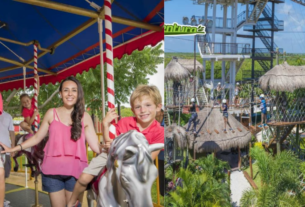Tucked into the remote highlands of Madagascar, the Zafimaniry people preserve one of the most remarkable living traditions on the island: the art of woodcarving. Recognized by UNESCO as part of the Intangible Cultural Heritage of Humanity, Zafimaniry woodcraft is more than just a creative skill—it’s a cultural identity passed down through generations. For travelers in search of authentic cultural encounters, visiting the Zafimaniry region offers a deeply enriching experience. And for those planning Madagascar tours, it presents a rare chance to witness a tradition unlike any other in the world.
Table of Contents
Who Are the Zafimaniry?
The Zafimaniry are a sub-group of the larger Betsileo ethnic group. They inhabit the forested mountains of the southeastern highlands of Madagascar, particularly around the village of Antoetra, the main gateway to Zafimaniry territory. With a population estimated at fewer than 25,000, the Zafimaniry have remained relatively isolated from the modern world—a fact that has helped preserve their way of life and artisanal traditions.
Unlike much of Madagascar’s rapidly urbanizing population, the Zafimaniry have held fast to their heritage. Their communities are defined by harmony with the forest, traditional wooden homes, and a deep spiritual relationship with both nature and ancestry.
The Woodcarving Tradition
What makes the Zafimaniry truly unique is their unparalleled mastery of wood carving. In a country where deforestation has deeply impacted traditional craftsmanship, the Zafimaniry stand out for keeping their ancestral woodwork alive.
In Zafimaniry villages, almost everything is made from wood: houses, furniture, doors, windows, tombs, and even household tools. But these aren’t ordinary wooden items—they’re ornately carved with geometric patterns, symbols that carry meanings tied to fertility, protection, and community. Each carving reflects cultural values and cosmological beliefs, making even a doorway a storybook of symbols.
Wooden houses are built entirely without nails, using techniques passed down orally and through demonstration. Decorative elements are both functional and symbolic, blending art with architecture in a seamless way that is rarely seen elsewhere.
UNESCO Recognition and Preservation Efforts
In 2003, the Zafimaniry woodcraft tradition was inscribed on UNESCO’s list of Intangible Cultural Heritage, bringing global attention to their cultural value. The designation helped fuel efforts to preserve this art in the face of challenges such as deforestation, migration, and modernization.
Despite these pressures, the Zafimaniry continue to train younger generations in their craft. Elders pass down carving techniques, designs, and meanings in apprenticeship-like relationships. In many ways, the act of teaching is as sacred as the carvings themselves—cementing the Zafimaniry’s place as stewards of intangible heritage.
Visiting this region supports local economies and incentivizes the preservation of traditions. For those planning Madagascar tours, including a stop in Antoetra or the surrounding villages offers a unique chance to engage respectfully with an endangered yet thriving culture.
Trekking to Zafimaniry Villages
Reaching the heart of Zafimaniry country isn’t as easy as hopping in a car—but that’s part of what makes it so special. Most visitors begin in Antoetra, which lies about 40 km from Ambositra, the nearest town accessible by vehicle. From Antoetra, travelers can embark on guided treks to nearby villages such as Sakaivo, Faliarivo, or Ifasina.
These treks take you through breathtaking highland landscapes—verdant hills, rice paddies, and thick forests—offering a raw, immersive experience of Madagascar’s interior. Along the way, local guides explain Zafimaniry customs, carving motifs, and forest traditions, offering deep context that goes beyond what photos can show.
The warm hospitality of the villagers is often a highlight of the journey. Visitors are welcomed with open arms, sometimes invited to observe artisans at work or even try their hand at simple carvings. It’s an opportunity to connect with the people behind the heritage.
Responsible Travel and Cultural Respect
When visiting indigenous communities like the Zafimaniry, respectful travel practices are essential. That means asking permission before taking photos, supporting local artisans by purchasing crafts directly, and learning a few words of Malagasy or Betsileo dialect to foster connection.
Organized Madagascar tours often include responsible cultural visits that prioritize sustainability and benefit the communities involved. Traveling with a reputable guide ensures that your presence is welcome and that your journey contributes positively to local livelihoods.
Why You Should Visit the Zafimaniry
In an age where globalization threatens to erase small cultural enclaves, the Zafimaniry people stand as a testament to resilience and the beauty of tradition. Their woodcraft is not only a visual marvel but a living expression of values, spirituality, and identity.
For those who crave more than just beaches and wildlife, this is your invitation to explore the soul of Madagascar. Zafimaniry villages offer a kind of cultural authenticity that can’t be recreated or staged. It’s found in the rhythm of daily life, the smell of wood shavings, and the stories carved into each plank and beam.
Whether you’re a cultural traveler, artisan, or seeker of the extraordinary, the Zafimaniry’s remote mountain homeland is a destination worth the journey.
Ready to explore Madagascar beyond the ordinary?
Plan your Madagascar tours today and experience the sacred artistry and timeless wisdom of the Zafimaniry firsthand.
If you are looking for a travel experience in Italian viaggi madagascar is for you or in Spanish visit viaje a Madagascar.

Oliver is a professional blogger and a seasoned business and finance writer. With a passion for simplifying complex financial topics, he provides valuable insights to a diverse online audience. With four years of experience, Oliver has polished his skills as a finance blogger.




